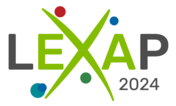Speaker
Description
The ground state hyperfine splitting was recently measured to 0.4 ppb for a beam of hydrogen in the ASACUSA spectrometry line (Nowak 2024). We plan to repeat the experiment using an antihydrogen beam. So far (Kuroda 2014, Kolbinger 2021), the beam intensity is too low (<1 ground state atom per cycle) to distinguish signal from background. In an upgraded mixing trap, we cool up to 4x10^7 particles to T~25 K (Amsler 2022)-- five times lower than before. Using a positron-antiproton mixing scheme similar to ALPHA's (Ahmadi 2017), we produce 4x10^5 antihydrogen atoms---seven times more than previously reported---all of which annihilate without forming a beam. A new method of mixing (Jonsell 2019) will soon be applied to increase the beam-like fraction. First results may be available by the time of this conference.
References
Ahmadi, M., et al. "Antihydrogen accumulation for fundamental symmetry tests." Nature communications 8.1 (2017): 681.
Amsler, C., et al. "Reducing the background temperature for cyclotron cooling in a cryogenic Penning–Malmberg trap." Physics of Plasmas 29.8 (2022).
Jonsell, S., and Charlton, M. "Formation of antihydrogen beams from positron–antiproton interactions." New Journal of Physics 21.7 (2019): 073020.
Kolbinger, B., et al. "Measurement of the principal quantum number distribution in a beam of antihydrogen atoms." The European Physical Journal D 75 (2021): 1-14.
Kuroda, N., et al. "A source of antihydrogen for in-flight hyperfine spectroscopy." Nature communications 5.1 (2014): 3089.
Nowak, L., et al. "CPT and Lorentz symmetry tests with hydrogen using a novel in-beam hyperfine spectroscopy method applicable to antihydrogen experiments." arXiv preprint arXiv:2403.17763 (2024).

